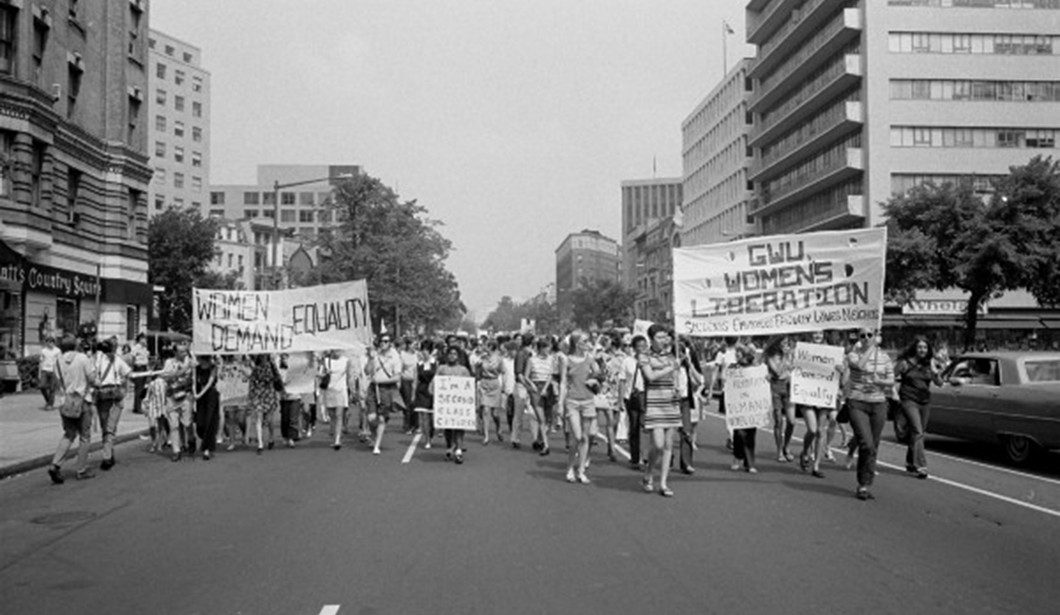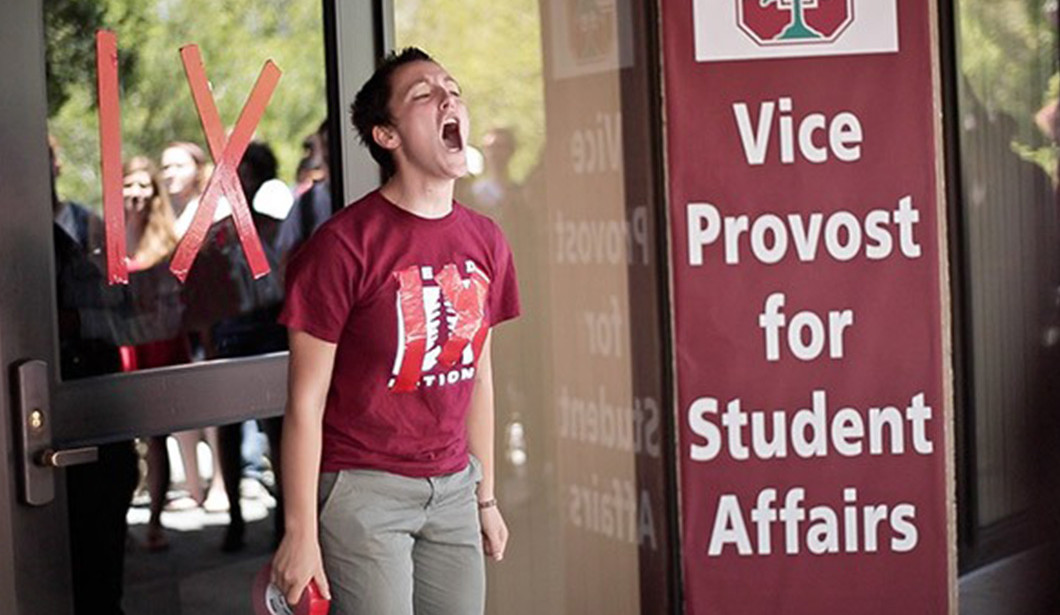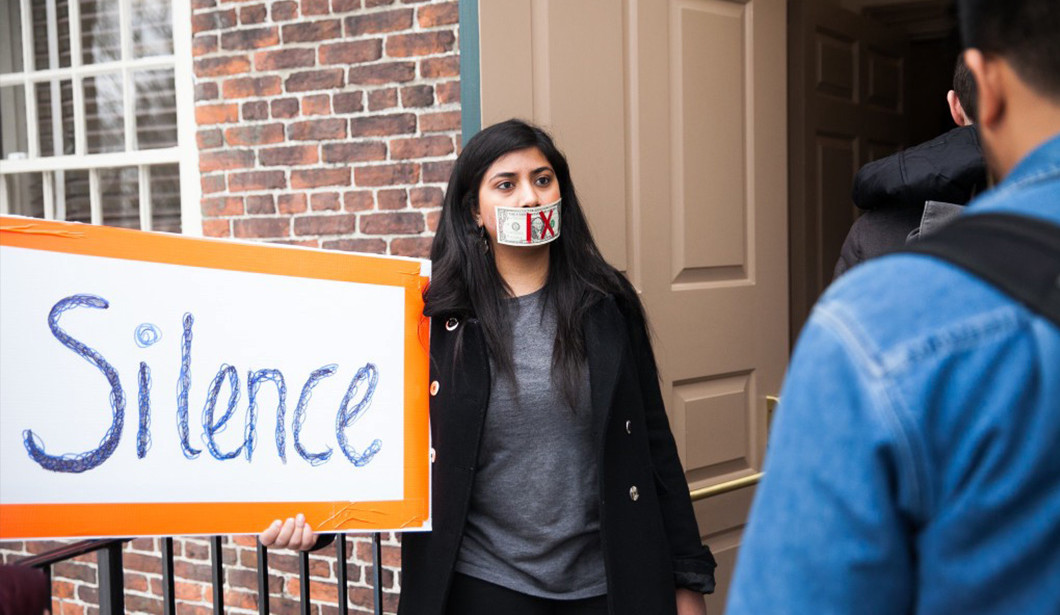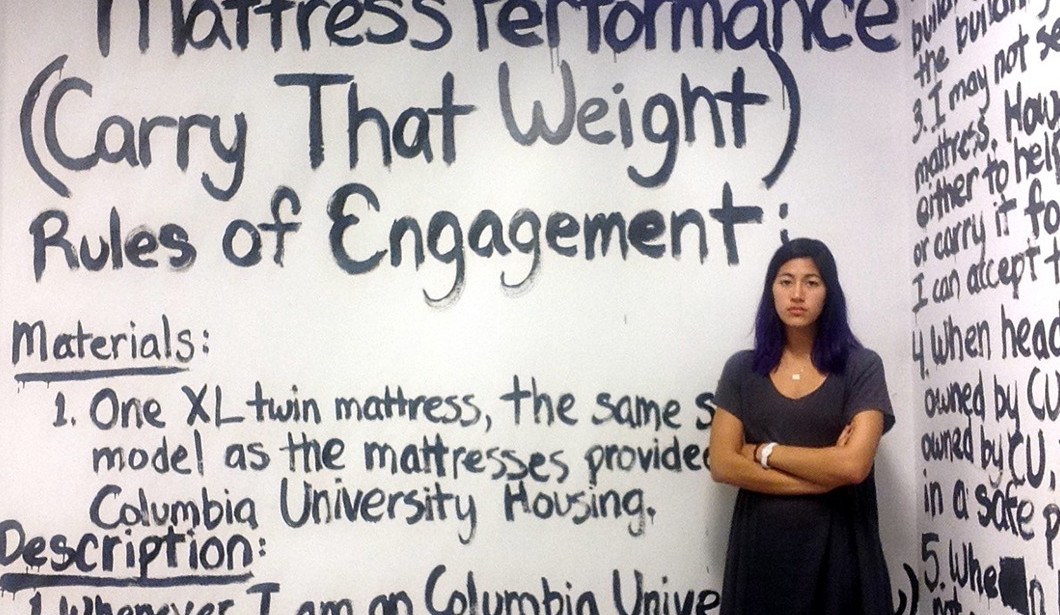The key text of Title IX of the Education Amendments of 1972 is brief: “No person in the United States shall, on the basis of sex, be excluded from participation in, be denied the benefits of, or be subjected to discrimination under any education program or activity receiving Federal financial assistance.”
In the landmark 1977 case Alexander v. Yale, a federal court ruled that schools could be liable under Title IX not just for overt discrimination but also for not responding to allegations of sexual harassment by professors.
This was a significant development, but further expansion of Title IX was slow and measured over the following decade. In the early 1980s, courts grappled with whether Title IX extends to employment discrimination at educational institutions receiving federal funds and the extent to which Title IX covers private institutions that receive federal funding indirectly.

Colleges and Universities, meanwhile, began to enact speech codes — prohibitions on expression that was protected under the First Amendment but that could offend others based on their race, religion, or sex. Broadening language borrowed from the employment setting, universities adopted sexual and discriminatory harassment policies that were ostensibly aimed at preventing the campus from being a hostile environment for women and minority students. In reality, they prohibited constitutionally protected speech.
In the mid-1990s, the phenomenon of campus speech codes converged with the expansion of Title IX by both the federal judiciary and Office for Civil Rights (OCR). In 1994, OCR investigated Santa Rosa Junior College after two women complained about comments made about them on an online college bulletin board that included “anatomically explicit and sexually derogatory terms.” In a letter to the college, OCR concluded that the offensive speech had created a “hostile educational environment” for the complainants and directed the college to adopt a policy banning, among other things, online speech that “has the purpose or effect of creating a hostile, intimidating or offensive educational environment.” Soon thereafter, when the University of Massachusetts faced criticism over a proposed, broad harassment policy in 1995, “[t]he chancellor at the Amherst campus, David K. Scott, responded to criticism by suggesting that a code was required by Federal Department of Education regulations.”
Universities adopted sexual and discriminatory harassment policies that were ostensibly aimed at preventing the campus from being a hostile environment for women and minority students. In reality, they prohibited constitutionally protected speech.
Meanwhile, courts began to rule that Title IX indeed required schools to respond effectively not just to quid pro quo harassment by faculty but also to allegations of student-on-student sexual harassment resulting in a hostile environment. In 1997, OCR released its Sexual Harassment Guidance, which affirmed that schools must respond to student-on-student harassment that creates a “hostile environment” because a failure to do so “permits an atmosphere of sexual discrimination to permeate the educational program and results in discrimination prohibited by Title IX.” OCR’s 1997 guidance also presented peer sexual assault as an example of harassment (and, by extension, discrimination) under Title IX.

Title IX indeed required schools to respond effectively not just to quid pro quo harassment by faculty but also to allegations of student-on-student sexual harassment resulting in a hostile environment.
By 1999, the Supreme Court had addressed the issue of institutional liability for peer “hostile environment” harassment, ruling in Davis v. Monroe County Board of Education that an educational institution could be liable for peer harassment under Title IX, but only when the conduct in question was “so severe, pervasive, and objectively offensive that it can be said to deprive the victims of access to the educational opportunities or benefits provided by the school.”
Concerned that universities were misinterpreting these laws to require the prohibition of constitutionally protected speech, OCR’s then assistant secretary wrote in a July 18, 2003 “Dear Colleague” letter, “I want to assure you tin the clearest possible terms that OCR’s regulations are not intended to restrict the exercise of any expressive activities protected under the U.S. Constitution.”
OCR’s concern for free speech proved to be short-lived. Within five years, OCR guidance had moved away from the Davis standard. In a September 2008 pamphlet titled “Sexual Harassment: It’s Not Academic,” OCR defined sexual harassment simply as conduct that “is sexual in nature,” “is unwelcome,” and “denies or limits a student’s ability to participate in or benefit from a school’s education program.” The pamphlet also lists examples of sexual harassment, including “making sexual propositions” and “telling sexual or dirty jokes,” which are unambiguously protected under the First Amendment.
After many years of gradual expansion, things began to change dramatically in the fall of 2010. Under the leadership of then Assistant Secretary for Civil Rights Russlynn Ali, OCR began taking a much more aggressive stance toward the enforcement of federal anti-discrimination laws, including Title VI of the Civil Rights Act of 1964 and, in particular, Title IX.
On October 26, 2010, OCR issued a Dear Colleague letter on the subject of bullying and discriminatory harassment. The main purpose of that letter was to remind educational institutions that some of what they might regulate as “bullying” would also constitute discriminatory harassment, thus triggering responsibilities under Title VI, which prohibits discriminatory harassment at schools receiving federal funding. However, there were several troubling aspects to the letter. Most notably, it failed to replicate the speech-protective understanding of student-on-student (or peer) hostile environment harassment contained in previous OCR guidance, omitting any reference to an objective component — a “reasonable person” standard — in the assessment of harassment claims.
Then, on April 4, 2011, OCR issued an unprecedented Dear Colleague letter on the subject of schools’ obligation, under Title IX, to respond to claims of sexual harassment and sexual violence. In that letter, OCR mandated that institutions “must use a preponderance of the evidence” (more likely than not) standard in their grievance procedures for claims of sexual violence and harassment.



